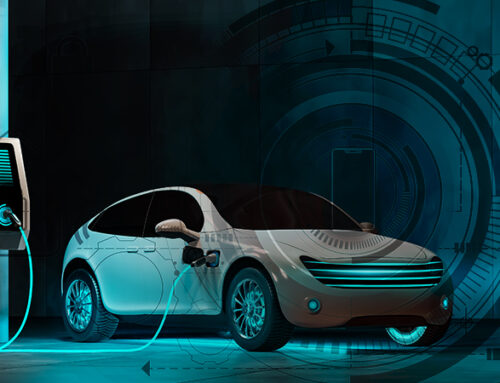When the UK Government first announced its Smart Meter Implementation Plan in 2013, it hoped to see 30 million smart meters installed by 2020. In fact, this target was only reached in Q3 2022. Having extended the rollout to 2024 back in 2019, the Government is now also extending its powers to require suppliers to install smart meters to 2028.
 As of the end of September 2022, the last quarter for which official data are available, 54% of households had a smart meter, but only 47% of households had a smart meter that worked in smart mode, ie 14.4 million households have a functioning smart electricity meter, 1.7 million households have a smart meter that works in “dumb” mode, and 12.6 million households have traditional electricity meters. The comparable figures for smart gas meters are 10.3 million, 2.0 million and 11.6 million.
As of the end of September 2022, the last quarter for which official data are available, 54% of households had a smart meter, but only 47% of households had a smart meter that worked in smart mode, ie 14.4 million households have a functioning smart electricity meter, 1.7 million households have a smart meter that works in “dumb” mode, and 12.6 million households have traditional electricity meters. The comparable figures for smart gas meters are 10.3 million, 2.0 million and 11.6 million.
Suppliers have recently been granted a 12-month extension to replace those SMETS1 meters that cannot, for technical reasons, be enrolled onto the Data Communications Company (“DCC”) network. The original deadline was 31 December 2022, but a consultation made it clear that the target would be missed. BEIS did not confirm the number of SMETS1 meters that need to be replaced, but said they are in the minority of overall meters.

The deadline for enrolling SMETS1 meters that do not need replacing onto the DCC network remained at 31 December 2022 with almost 10 million meters being successfully moved to the network by early November, with 5 million more to migrate. This process should make dumb SMETS1 meters smart again. Absent a huge rush in the last two months of the year, the target would have been missed given monthly migrations of just 313,585 in May and 155,343 in June. I wasn’t able to find data for the actual migrations by the end of the year, but found plenty of discussions online suggesting many households still have “dumb” SMETS1 smart meters. Interestingly, there are also reports of SMETS2 meters going dumb when the customer changes supplier, a problem the second generation of smart meters was designed to fix.

A further challenge may arise with SMETS2 meters when the 3G network many of them rely on for their comms is turned off. The GB smart meter network is divided into three areas: north, central and south. In the north, Arqiva is responsible for the network and uses a proprietary long-range radio technology. However, in both the central and southern regions O2/Telefonica operates the network using 2G/3G for its SMETS2 smart meters. All regions also contain SMETS1 devices which use 2G technology.
“We’re effectively building and installing comms hubs in the southern and central regions today that have a shorter lifecycle which obviously will impact costs…you can almost say if we continue this route of installing devices that have a shorter shelf life, you have another mass rollout program potentially…From a functional perspective if you switch the 3G network off, in theory, the comms hubs will still operate on a 2G network. But their connectivity, bandwidth and capability to provide that data is drastically reduced. If we still have 12-13 million comms hubs on the wall when they switch the 3G network off, I doubt very much that the network will function as it did before and whether that future function meets, in a material way, the demand at all is a question mark,”
– Matthew Roderick, founder and chief executive of digital services company n3rgy
Former chief technology officer of the DCC, Matthew Roderick told Utility Week that the functionality of communication hubs could be affected as mobile operators “re-farm” the 2G radio spectrum for other purposes. A similar technological rollout in 2016 when DCC introduced a new Local Area Network technology cost hundreds of millions of pounds. Introducing a new Wide Area Network technology would likely have similar costs. According to DCC the upgrade of 2G/3G communications hubs will happen gradually as devices reach end of their lives, and as such the cost is factored into the rollout. Of course, for households with poor mobile phone signal, none of these solutions will work in any case.
The benefits of smart meters still seem exaggerated while the risks are understated
The last cost-benefit analysis of smart meters was carried out in 2019, and showed that smart meters were expected to deliver a net benefit of £3.6 billion over the 21 years from 2013 – as there are about 28.7 billion households in the UK, this gives a net benefit per household of about £125 over 21 years or roughly £6 per year! In 2016 the net benefits were assessed at £5.7 billion, down from £6.7 billion in 2013. In other words, each time the analysis has been updated, the net benefits have fallen. Perhaps this is why we have not seen an update since 2019…the net benefits may have evaporated altogether…
This winter has been the first time that consumers have had a proper taste of demand-side response through the Demand Flexibility Service, which requires participants to have a smart meter that functions in smart mode. However, the reported savings have been very low with some consumers going to extreme lengths to save money. An industry colleague recently suggested that it may be cheaper in future to pay consumers to use electricity at night while charging high prices for daytime and in particular peak time use. This would have a significant negative impact on households living in poverty, where people would be strongly incentivised to stay up late into the night to carry out household chores, cutting in to their sleeping time, which would be harmful to their health. And, as I have said before, we need to be cognisant of the fire risks associated with running large appliances overnight if they are left unattended.
Ofgem has suggested in the past that when time-of-use tariffs arrive it would act to protect vulnerable consumers, potentially by excluding some portion of consumption from variable rates, but it would be difficult to prevent people from wanting to benefit from such schemes if they could earn money by using electricity at night. Regulating to prevent the resulting harms will be very challenging, but it is important that the efficient utilisation of infrastructure is not prioritised above human welfare.
Another colleague suggested that suppliers could combine data from a range of sources to profile their customers in order to offer them tailored services. While this also seems attractive from an energy perspective it would have serious implications for the privacy and safety of consumers, for example if the supplier was able to identify people living alone, their relationship status, their wealth level, and when they would be at home or out of the house. Any data breaches could leave consumers vulnerable to burglaries, fraud and even physical assaults. With the retail energy business being characterised by extremely thin margins, expecting suppliers to develop gold-plated data security seems unrealistic.
On top of all this, staff at National Grid ESO have said that they are not currently able to manage consumer responses in size and are concerned about what would happen if a large number of consumers all responded to the same price signal at the same time. This could create an equal and opposite problem to the one the service was trying to resolve.
These recent conversations make me wonder whether the current industry consultation processes go far enough to properly protect the interests of consumers. As energy consumers become less passive there will be a step change in the way the industry operates, which has the potential to be very damaging for some types of consumers. Perhaps it is time to create a new body whose role is to advise on these changes, possibly with powers of veto, because as it stands, consumer groups such as Citizens Advice and National Energy Action respond alongside every other stakeholder and it is unclear whether their views carry enough weight to persuade Ofgem not to implement changes that are being loudly advocated by energy market professionals who often forget that the world is not made up only of the affluent and engaged.
.
Smart meters have been sold as a means by which consumers can save money. This is largely untrue – they are a means by which consumers can monitor usage, should they so choose, but there are other ways of doing this, and actually saving money relies on behavioural changes which a smart meter alone cannot deliver. The rollout has been hampered by poor technology choices, and arguably the rush to market with SMETS1 will end up making the scheme cost more that it otherwise would. Further poor choices around the use of 2G/3G could well force the need for yet another generation of smart meters, adding further costs for little benefit.
Functioning smart meters will be a necessary pre-requisite for demand-side response, but many questions around consumer protection and trust in suppliers will need to be addressed first. We should learn the lessons from SMETS1 and take our time to design these schemes properly – rushing in with half-baked ideas will risk turning consumers off the idea altogether further undermining the potential benefits that could be achieved in the future. Sadly, leaning from past mistakes is not a characteristic of the British energy market, its regulator or the government departments driving policy.






MY FIRST GENERATION SMART METER FROM BRITISH GAS STOPPED COMMUNICATING IN AUGUST 2022. THEIR INITIAL RESPONSES WERE THE FSULT WOULD BE RECTIFIED “WITHIN 7 DAYS” -THEY FAILED TO ACHIEVE THIS. THEN THEIR RESPONSE WAS THEY WERE WORKING ON A FIX, BUT THEY FAILED TO DO THIS. EARLY IN 2023 THEIR REPONSE WAS THE METERS WOULD BE WORKING BY MARCH 2023 – THEY FAILED TO DO THIS. AFTER NUMEROUS REQUESTS AND COMPLAINT MY METER IS STILL “DUMB” AND BG ARE UNABLE TO GIVE A DATE WHEN THEY WILL BE WORKING AGAIN. IN MY OPINION SMART METERS ARE A WASTE OF TIME AS, AS I HAVE FOUND OUT, THEY JUST DON’T WORK, AVOID AT ALL COSTS.
I have gen 1 meter installed and electric charges were sensible the reading were received consistently. However gas readings were not accessed due to house construction and distance from main controller.. I then had gen2 meters installed. Now all readings are intermittent and my energy supplier will not change what logic says is a faulty unit. They have now said I should take it up with ombudsman!